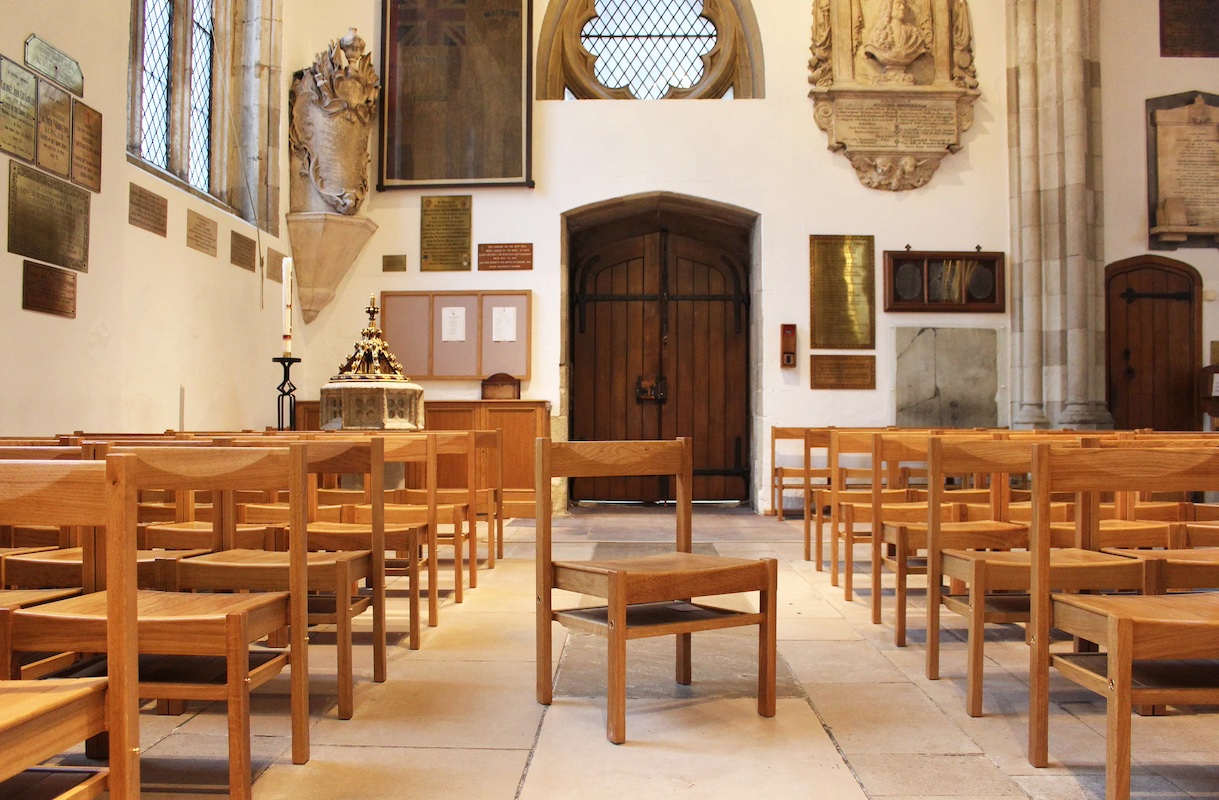
Church Chairs: An In-Depth Look at Their History, Design, and Importance
Church chairs are a fundamental aspect of any place of worship, offering comfort, functionality, and an element of design that contributes to the overall atmosphere of a church. Over the centuries, the evolution of church chairs has reflected broader changes in society, architecture, and religious practices. This article delves into the history, design considerations, types, and significance of church chairs in the context of their role within the church setting.
Historical Evolution of Church Seating
Early Christian Period
In the early Christian period, the concept of dedicated church furniture was almost non-existent. Worshippers often stood during services, and if seating was available, it typically consisted of simple benches or stools. The emphasis was on the communal aspect of worship rather than individual comfort.
Middle Ages
During the Middle Ages, the development of church architecture saw the introduction of more formal seating arrangements. Pews became a common feature in churches. These long, wooden benches could accommodate multiple worshippers and were often fixed to the floor. The pews symbolized the hierarchical nature of medieval society, with more prominent and wealthy parishioners seated at the front and the less affluent at the back.
Renaissance and Baroque Periods
The Renaissance and Baroque periods brought a flourish of artistic and architectural innovation. Church furniture, including chairs, became more ornate and elaborately designed. The use of high-quality materials such as oak and walnut, along with intricate carvings and decorations, reflected the church's wealth and the importance of religious ceremonies.
Modern Era
In the modern era, church seating has evolved to prioritize comfort, functionality, and inclusivity. The rigid and uniform pews are increasingly being replaced or complemented by individual chairs, which offer greater flexibility in terms of space arrangement and usage. Modern church chairs are often designed with ergonomics in mind, ensuring that worshippers can sit comfortably for extended periods.
Design Considerations for Church Chairs
Comfort
Comfort is a primary consideration in the design of modern church chairs. Services can be lengthy, and the comfort of the congregation can significantly impact their overall worship experience. Ergonomically designed chairs with padded seats and backrests help to support the spine and reduce fatigue.
Durability
Church chairs need to withstand frequent use over many years. This necessitates the use of durable materials such as high-quality wood or metal frames, and fabrics that are both attractive and hard-wearing. Stain-resistant and easy-to-clean materials are often preferred to maintain the chairs' appearance over time.
Aesthetics
The visual appeal of church chairs plays a significant role in the overall ambiance of the worship space. The design should complement the architectural style of the church and contribute to a serene and sacred atmosphere. Many modern church chairs are available in a variety of colors and finishes, allowing them to blend seamlessly with different interior designs.
Flexibility and Storage
Modern church chairs are often designed to be stackable or foldable, offering flexibility in how the worship space is used. This is particularly useful for multi-purpose spaces that host various events and activities. Chairs that can be easily moved and stored allow for quick reconfiguration of the seating arrangement to suit different occasions.
Inclusivity
Inclusivity is an important consideration in the design of church chairs. This includes providing options for individuals with mobility issues, such as chairs with arms for support, or spaces allocated for wheelchair users. Ensuring that all members of the congregation can participate comfortably is a key aspect of modern church design.
Types of Church Chairs
Wooden Chairs
Wooden chairs are a traditional choice for many churches, valued for their classic look and durability. They are often made from hardwoods like oak, cherry, or walnut and can be stained or painted to match the church's interior décor. Wooden chairs can range from simple, unadorned designs to highly ornate pieces with intricate carvings.
Upholstered Chairs
Upholstered chairs offer a higher level of comfort with padded seats and backrests. They are available in a wide range of fabrics and colors, making them a versatile choice for different church interiors. Upholstered chairs often have a softer, more inviting appearance, enhancing the overall comfort of the worship space.
Metal Chairs
Metal chairs are known for their strength and durability. They are often lightweight, making them easy to move and rearrange. Metal chairs are typically less expensive than wooden or upholstered chairs and can be a practical choice for churches with limited budgets. They are also available in a variety of styles, from simple and utilitarian to more decorative designs.
Plastic Chairs
Plastic chairs are the most economical option and are often used in churches with high turnover or for outdoor services. They are lightweight, easy to clean, and available in many colors. While not as aesthetically pleasing as wooden or upholstered chairs, plastic chairs can be a practical solution for certain settings.
The Importance of Church Chairs
Enhancing Worship Experience
Comfortable and aesthetically pleasing church chairs can significantly enhance the worship experience. When worshippers are physically comfortable, they can focus more fully on the spiritual aspects of the service. Additionally, well-designed chairs contribute to the overall atmosphere, making the worship space feel welcoming and sacred.
Supporting Community Events
Modern churches often serve as community centers, hosting a variety of events beyond regular worship services. Flexible seating arrangements facilitated by modern church chairs allow the space to be adapted for meetings, social gatherings, educational programs, and more. This multifunctionality supports the church's role as a hub of community activity.
Reflecting Church Identity
The design and arrangement of church chairs can reflect the identity and values of a church. For example, a church that prioritizes tradition and history might opt for classic wooden pews, while a more contemporary congregation might choose sleek, modern chairs. The choice of seating can communicate the church's approach to worship and its connection to the broader community.
Inclusivity and Accessibility
Providing comfortable and accessible seating for all members of the congregation is a fundamental aspect of modern church design. Chairs that accommodate individuals with different needs ensure that everyone can participate fully in worship and community activities. This inclusivity strengthens the sense of belonging and community within the church.
Church chairs are far more than mere pieces of furniture; they are integral to the worship experience and the functionality of the church space. From their historical evolution to modern design considerations, church chairs reflect broader trends in society, architecture, and religious practice. By prioritizing comfort, durability, aesthetics, flexibility, and inclusivity, modern church chairs enhance the worship experience and support the church's role as a community center. As churches continue to evolve, so too will the design and function of their seating, always aiming to serve the needs of the congregation and reflect the values of the faith community.






